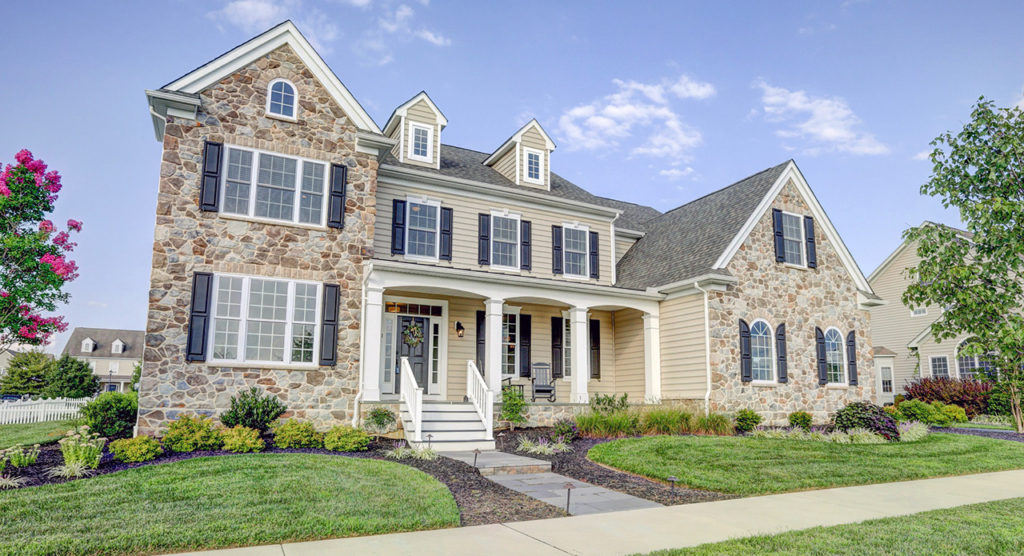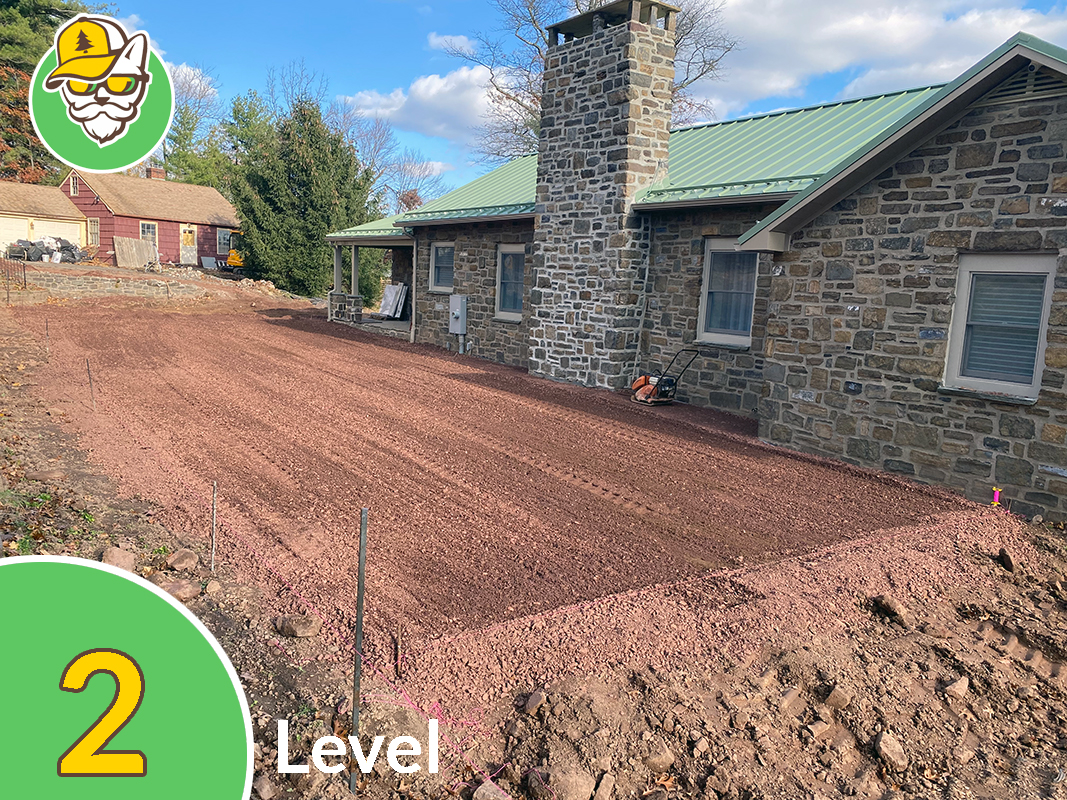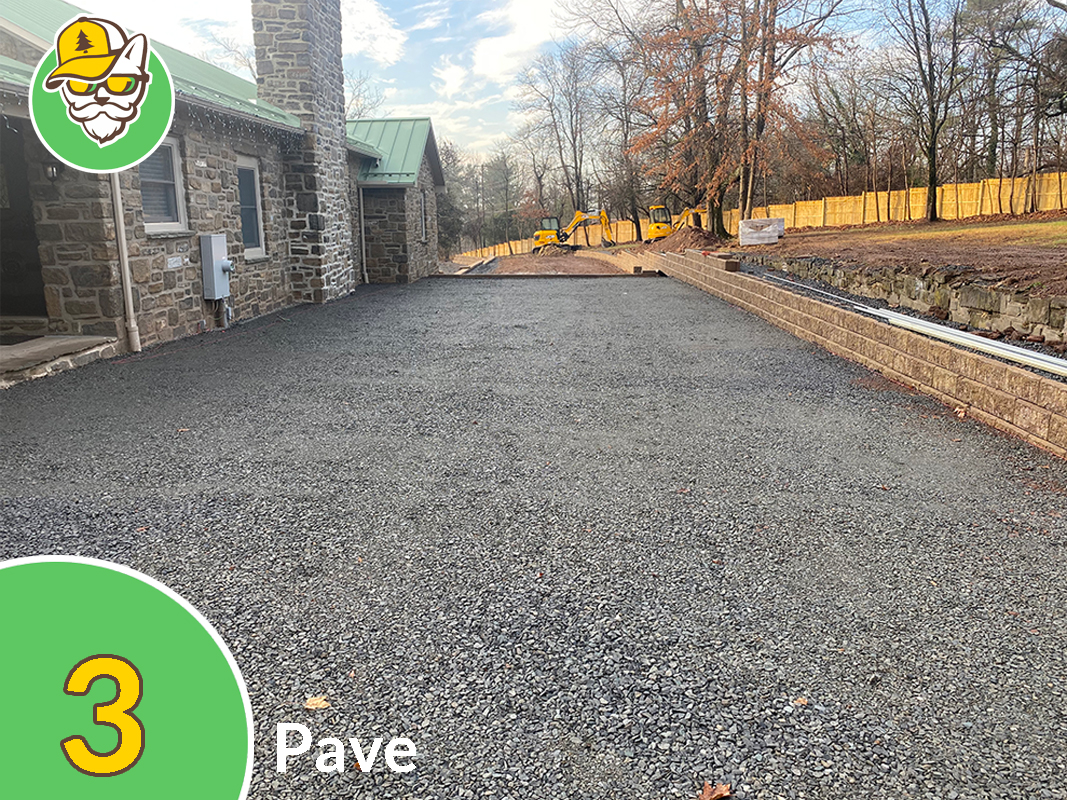A properly leveled yard is instrumental to keeping your lawn healthy and aesthetically pleasing. It provides stability for your plants and allows for proper water management and drainage. Uneven or patchy grass, dying shrubs, a yard that turns muddy after rainfall, standing water during snow melt are all signs of improper leveling. The ground must gradually slope away from your home to allow water to drain away from the foundation, maintaining its structural integrity. Uneven lawn that slopes toward the house will let the water pool next to the foundation causing moisture build up. This can weaken the structure by allowing the water to enter the foundation and seep though to the inside. A compromised foundation leads to major problems, like unsafe structure, mold and joist rotting.

Causes of Leveling Problems
- Tree or brush removal
- New impermeable structures (pool, patio)
- Tree root growth
- Damage from animals
- Ground settling
Why Grade Your Yard?
Having proper drainage around the foundation of your home is reason enough, but uneven or deeply sloped yards are simply less functional than even ones. It’s more challenging to make sure plants are getting an appropriate amount of water when dealing with rolling landscapes. It becomes especially evident when trying to install a new hardscaping feature like a stone patio or a swimming pool. Very often you would be forced to make concessions because optimal placement of such installations requires a flat surface. A properly leveled yard is key to your landscaping or hardscaping project success and delivers more value.
Do I Have a Drainage Problem?
The most simple way to tell if you have yard leveling problems is to look for standing water. Areas immediately next to the house where water pools after rainfall or during snowmelt indicate improper ground slope and should be addressed. If you notice a musty smell, see any signs of mold on the inside of a perimeter wall, if water is entering your basement – you should contact a professional.
Minimum Slope Requirement
A minimum slope away from the foundation should be 2 to 3 inches for every 10 feet, or about 2 percent, to prevent drainage problems.
Maximum Slope Requirement
A maximum slope should be 12 inches for every 4 feet, or about 25 percent, to prevent soil erosion.
Can I Fix It Myself?
For smaller issues it is absolutely a DIY project. You can use a shovel and a wheel barrow to move the soil and fill the low spots. However, large scale grading issues will require skilled professionals and machinery.
Need help with your yard? Please get in touch
Yard Services
Each property will have different needs based on its natural grading, soil makeup, and vegetation. As such, we offer several different types of land grading.
Bobcat Machinery
A versatile machine that can scoop and move soil quickly. Different attachments allow us to compact, flatten and smooth the new surface.
Excavation
It’s not always that proper grading requires building up soil, sometimes getting the right grade means making a hole. Excavating involves digging down to create a low-lying area, creating a natural runoff slope.
Drainage Solutions
Proper drainage is a critical part of any landscaping or hardscaping project. For proper water runoff, we grade the land to carry water away from structures and into a stream or runoff. Installing drainage pipes in the ground and channeling water is how it’s done.
Surface Smoothing
At a glance, a flat piece of land is just that. However, many paver stone projects will still require a good surface smoothing. We can make sure your paver stone driveway, walkway or patio hardscaping project starts from a blank canvas.
Topsoil Installation
Topsoil is the basic foundation of a healthy loan or garden. It is full of nutrients that allow your plants thrive. In addition, it’s generally more aesthetically pleasing vs existing soil in Bucks and Montgomery County.




